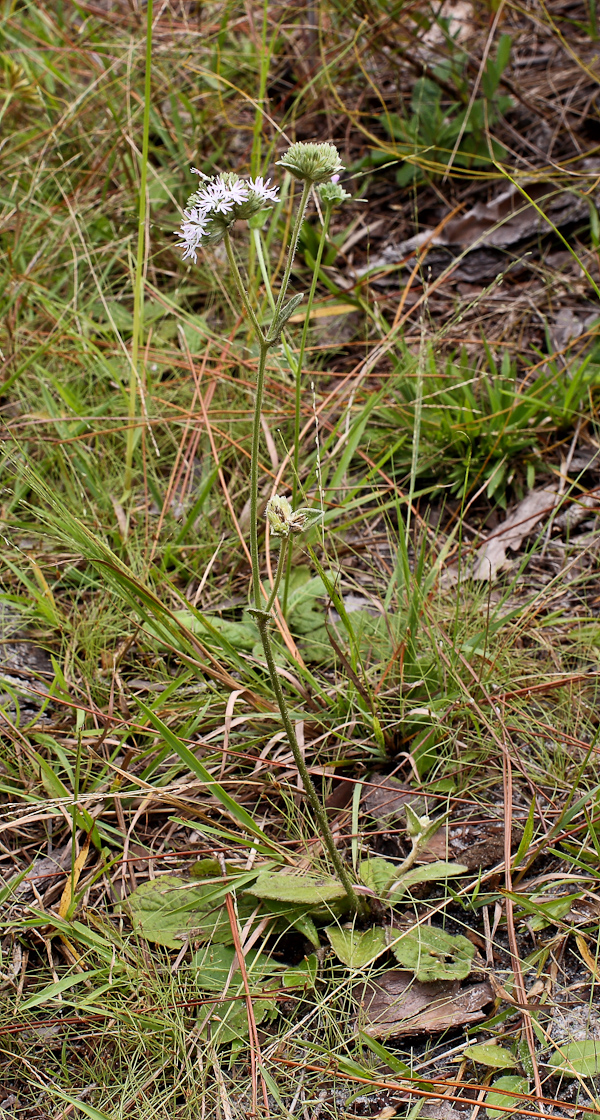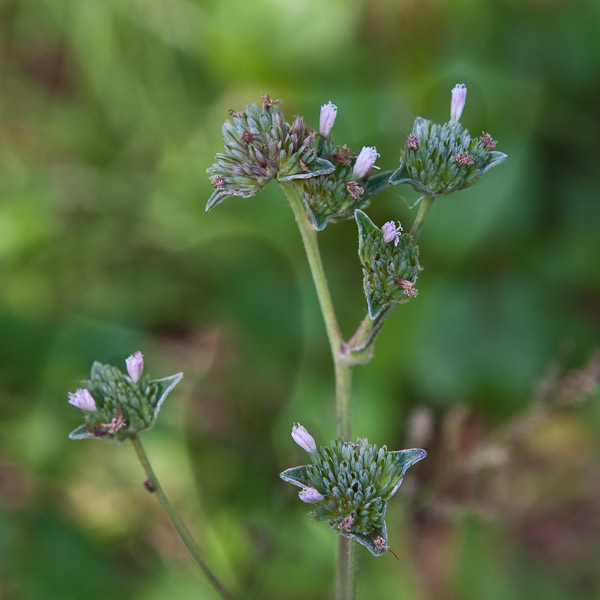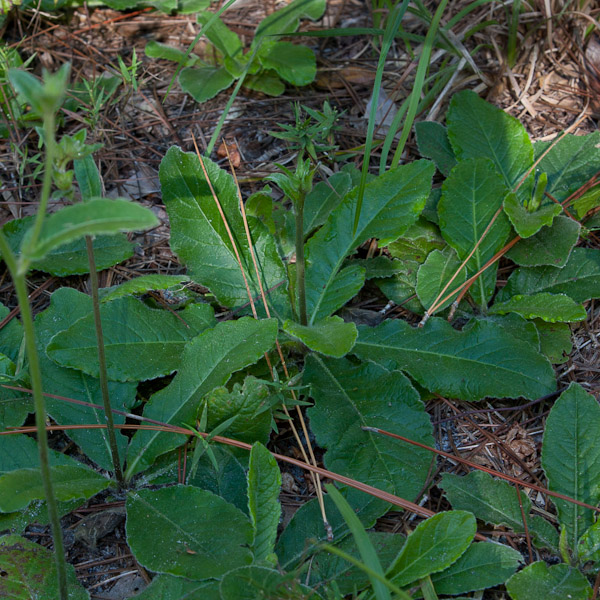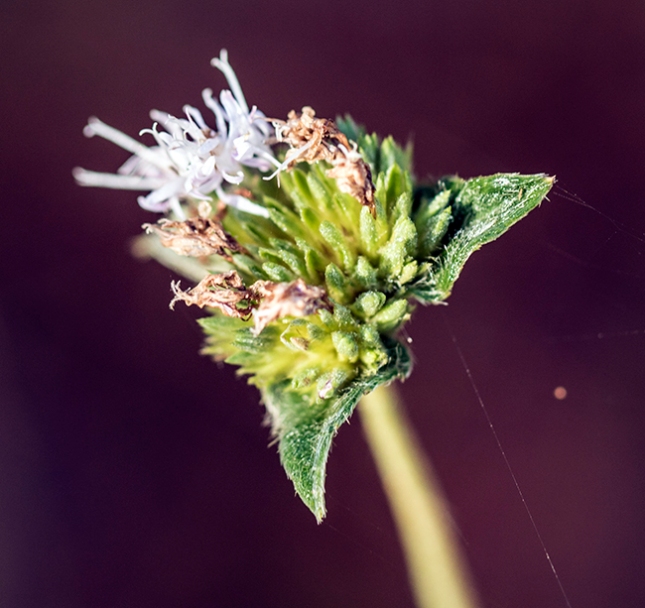Elephantopus elatus
(Translated: Tall Elephant Foot)
Asteraceae, the Aster Family
Among the local wildflowers, Elephant’s Foot is a standout… pretty, weird, and abloom all over Halpatioke Park this morning where John and I pursued a photo project.

Elephant’s Foot with its rosette, photos by John Bradford.
Preferring open dry habitats, its leafy rosettes rest flat upon the earth. A vertical stalk rises a foot or two, often branching as a perfect Y, and tipped with three equal bracts embracing a dense bushy-bristly flower head. The spongy base of the head protects young flowers and fruits, and probably holds moisture funneled inward by those bracts. Having just a few flowers exposed at any given time allows the reproductive cycle to span weeks accommodating pollinators of every buggy sort.

Most of the foliage sprawls radially on the ground atop a perennial taproot. Rosettes are common in the Aster Family, and in plants of harsh open environments. There are multiple advantages to rosettes in such places, including minimal wind exposure, using the ground to support the leaves, safety beneath most grazers and fires, easy regrowth straight from the root, and extra water collection.
Members of the Aster Family tend to have a biting pungence, some might find unpleasant while others may approve, Marigolds for example. Asters are the primary although not sole sources of defensive compounds called lactone sesquiterpenes, which are bioactive as you might expect chemical defenses to be.
Normally I’m skeptically unenthusiastic about the countless historical uses of most plants. Google a widespread species and see how many ailments it has treated. Thousands of plants have been screened for antimicrobial activity, and no surprise, many do kill cooties. Most plants have chemical defenses. (Please do not eat the weeds.)

But there is chasm between historical remedies and modern clinical efficacy. Today we may witness a potential bridge across that divide.
Lactone sesquiterpenes have attracted attention for anti-cancer activity, and the positive indicators extend promisingly past vague traditional treatments all the way to specific understanding of the biochemical mechanisms by which these chemicals cause programmed cell death (apoptosis), including roles in gene control. Elephantopus species are players in this realm.
Elephantopus species produce lactone sesquiterpenes, some named for today’s plants: elephantin, elephantopin, and others. These have hit the cancer literature as understood in mechanism, effective in the lab, and worthy of a deeper testing.
This is all promising hand-in-hand with the march of biotechnology, and lactone sesquiterpenes or derivatives from some relatives of Elephantopus have made it to clinical trials, including products from Mulleins, Feverfews, Wormwoods. All in the Aster Family.
Exciting stuff, and maybe the beginning of the future predicted emphatically by the leading botanist of my generation, Dr. Peter Raven, who was 1999 Time Magazine Hero of the Planet with the message of saving the rainforest as a green treasurechest waiting pharmacological discovery. Emerging biotechnology of today and tomorrow is the likely key to that treasure, and maybe some of the gems are behind the soccer field in Halpatioke Park, Stuart, Florida.

———————————————————————————————
A start for those who want to dig deeper: DIG HERE
theshrubqueen
September 23, 2017 at 2:16 pm
Biting pungence, my favorite phrase today and how intriguing to find real medicine in the roadsidea. I bet there is more.